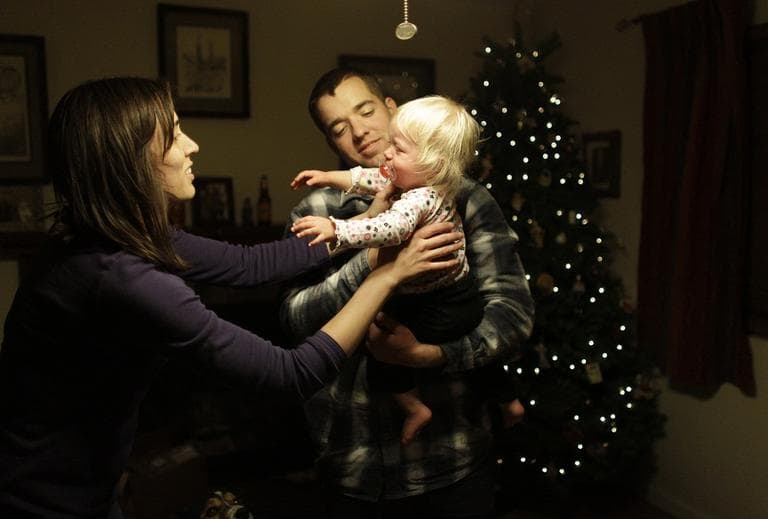Advertisement
Couples Say 'No' To Parenthood Citing High Costs
Resume
When The New York Times' web producer Nadia Taha got married, people started asking more and more frequently, "When are you going to have a baby?"
Though she hadn't yet felt that certain biological calling, Taha decided to crunch the numbers. She factored in the cost of daycare ($20,000 was the floor for childcare in New York City), housing (keeping in mind the need for a good public school district, and maybe an elevator), college (she and her husband would pay half the cost for a public four-year institution), and even grandparent-hood (using insurance provider Metlife's estimates).
Cost-Benefit Analysis
Taha came to an estimate of $1.7 million. She's received enormous backlash from online commenters, many of whom have called her selfish and callous for doing this kind of cost-benefit analysis.
"The tough thing about the decision is that you can see up-front, very clearly, what the disadvantages are to having children."
Nadia Taha
"It does seem sort of alarming to people," says Taha. "All of human history we have reproduced and multiplied without giving it much consideration, it's a basic biological function."
But the advent of birth control has changed this, Taha says this has made starting a family "a life style choice."
"We all know families who did some thinking about when to have their first child, when to have their third," Taha says. "To me it seems pretty natural to sit down and look at the pros and cons. The tough thing about the decision is that you can see up-front, very clearly, what the disadvantages are to having children."
Taha says the advantages are less clear, and, people tell her, she won't know them until she becomes a parent.
Raising A Family: Location, Location, Location!
Taha's numbers are largely on a USDA surveys on what parents today are spending on their children. The USDA estimates that a child born in 2011 will cost $234,900 to raise. But there's a big difference in Taha's case: she not only lives in the urban North East, she lives in New York City.
Taha says in her case the USDA's math was on the low side. While transportation in New York City is on the low side, Taha says daycare is "outrageous," she says $20,000 a year for infant care in Manhattan is pretty typical.
Housing is another big expense. Taha says she doesn't like the way the USDA measures the housing costs of a child.
"[The USDA] takes a look at, for example, the bedroom that the child occupies, and figure out what proportion of the house that is, and attribute that as the cost of housing the child. But that's sort of misleading," she says.
Taha points out that childless couples are fine living in a district with bad public schools. But once couples become parents, they are likely to move to better school district, which brings along higher housing costs and taxes.
- New York Times: Opting Out of Parenthood, With Finances in Mind
- Baby Center: First-Year Baby Cost Calculator
- MetLife: Report On American Grandparents
Guest:
- Nadia Taha, web producer for The New York Times
This segment aired on December 14, 2012.